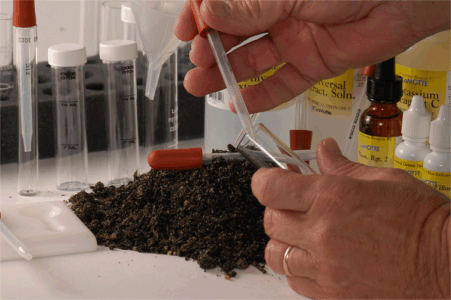Your cart is currently empty!
Agnihotra Ash and Water Soluble Phosphates
Dr Tung Ming Lai, Denver, Colorado.
 |
| Report from Dr Tung Ming Lai, Denver, Colorado, USA: I did some lab testing on Agnihotra ash. The results are interesting. 0.1g of ash was shaken with 25 ml of water for forty-eight hours and then the water-soluble phosphate content was measured. The same amount of ash was shaken with two different soils (5g) from Colorado (also 25 ml of water) and phosphate content was measured after forty-eight hours of being shaken. The results are as follows. (The values are the average values of duplicates.) |
| SOIL USED | ASH ADDED | WATER-SOLUBLE PHOSPHATE EXTRACTED |
| None | Non-Agnihotra ash | 0.68 mg. P/.02 g. ash |
| None | Agnihotra ash | 1.78 mg. P/.02 g. ash |
| Weld loam | Non-Agnihotra ash (0.02 g. ash/g. soil) | 4.2 mg. P/ g. soil |
| Weld loam | Agnihotra ash (0.02 g. ash/g. soil) | 17.2 mg. P/ g. soil |
| Red Feather loamy sand | Non-Agnihotra ash (0.02 g. ash/g. soil) | 2.3 mg. P/ g. soil |
| Red Feather loamy sand | Agnihotra ash (0.02 g. ash/g. soil) | 11.5 mg. P/ g. soil |
|
The non-Agnihotra ash was produced with the same ingredients in the same copper vessel as Agnihotra ash. The only difference was the non-Agnihotra ash was not produced at sunrise or sunset, and no mantras were chanted.
(All growing plants need phosphorus; however, regardless of how much phosphorus is added to the soil, only the water soluble portion can be utilized by the plant. On an average, only about five percent of the phosphorus in conventional chemical fertilizers is water soluble.–Ed.) |
Comments
2 responses to “Agnihotra Ash and Water Soluble Phosphates”
I am currently in Denver and would like to meet Dr Tung Ming Lai to get more information about soil remediation using Agnihotra ash.
Unfortunately I have lost touch with Dr Lai. Sorry.
Leave a Reply